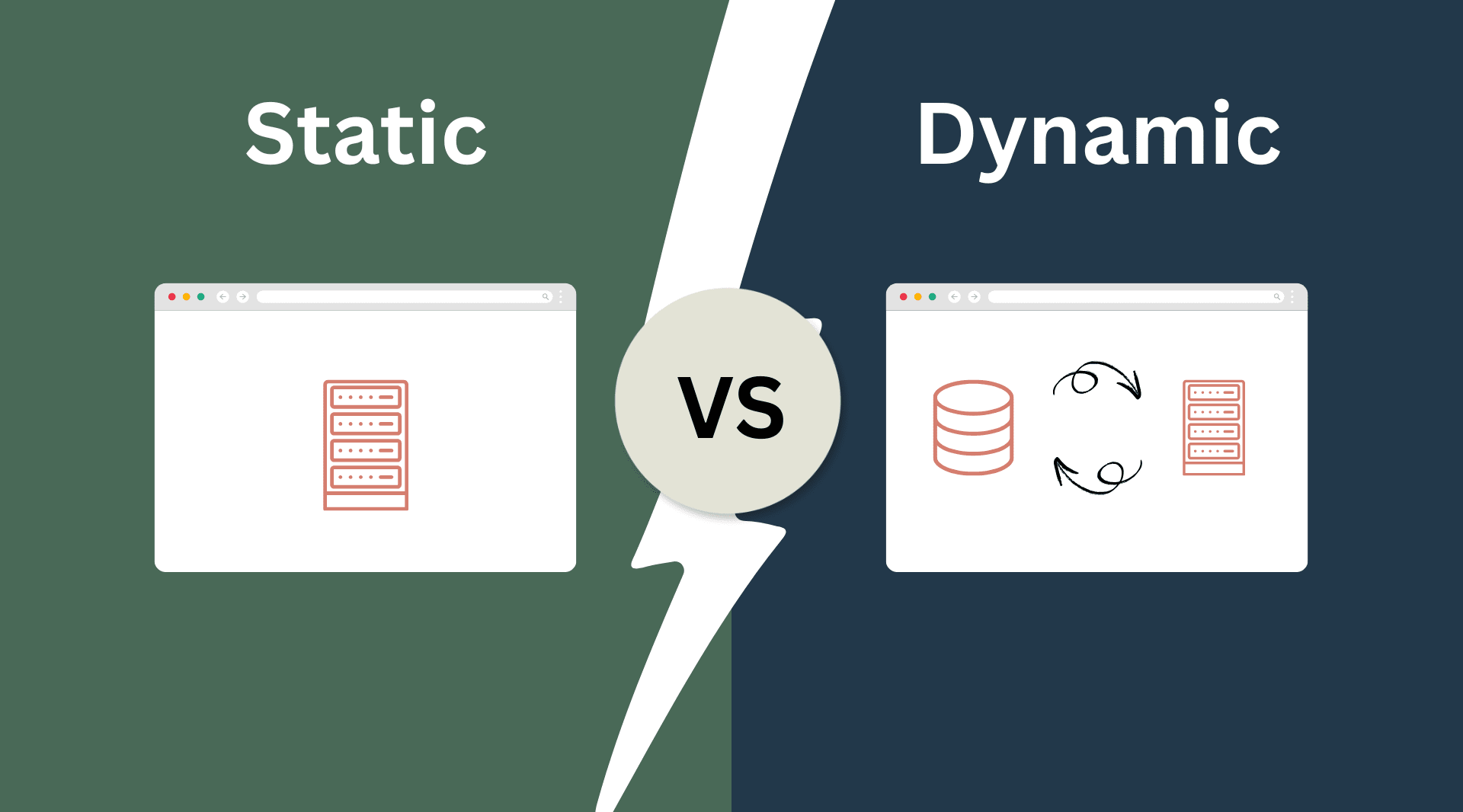Choosing the right type of website for your business is a crucial decision. Your website isn't just a digital presence — it's often the first impression customers have of your brand.
One key choice you'll face is whether to go for a static website or a dynamic website. Both have their strengths, but the best fit depends on your business needs, budget, and goals.
Let's explore the differences, pros and cons, and how to decide which one is right for you.
What are static websites?
A static website consists of pre-built pages that are delivered to users exactly as they are stored. Think of it like a printed brochure - it's simple, fast, and doesn't change unless someone updates the code.
Static websites are typically built using tools like Jigsaw, Hugo, or Ghost.
Key features of static websites
- Speed: Static sites load incredibly fast because the content is pre-rendered and doesn't rely on databases.
- Security: With no databases or dynamic features, there's less risk of hacking or vulnerabilities.
- Low maintenance: Once built, they require minimal upkeep, making them ideal for businesses with limited resources.
- Eco-friendly: They use fewer server resources, which reduces their carbon footprint — a great fit for businesses that value sustainability.
Best for:
- Small businesses like local gardeners, dog walkers, or hairdressers showcasing their services.
- Portfolios or informational sites that don't need frequent updates.
For example, a local gardener might use a static website to display their services, contact details, and a gallery of completed projects. Since the content isn't changing often, a static site is perfect.
What are dynamic websites?
Dynamic websites are more interactive and generate content on the fly based on user interactions or data from a database.
They're like a conversation, adapting to user needs in real-time. Platforms like WordPress, Drupal, or custom-built systems are commonly used for dynamic websites.
Key features of dynamic websites
- Flexibility: They can handle complex features like user accounts, e-commerce, and blogs (* see our FAQs).
- Interactivity: Dynamic sites are great for engaging users, offering personalised experiences, and managing frequent updates.
- Scalability: They can grow with your business, adding new features as needed.
Best for:
- E-commerce stores, booking platforms, or blogs that need regular updates (* see our FAQs).
- Businesses that rely on user interaction, such as online booking systems or membership platforms.
For instance, a hairdresser might use a dynamic website to allow customers to book appointments online, view available time slots, and receive personalised confirmations. This level of interaction makes a dynamic site the better choice.
Pros and Cons: Static vs. Dynamic websites
To help you decide, we have put together a quick comparison.
Static
- Extremely fast
- More affordable
- Minimal maintenance
- Limited functionality
- Very secure
- Low-carbon impact
Dynamic
- Slower due to database queries
- Potentially higher hosting and development costs
- Requires regular updates
- Highly customisable
- More vulnerable to attacks
- Higher resource usage
Which should you choose?
The choice between static and dynamic websites depends on your specific needs.
Here are some things to consider:
- Do you need frequent updates or interactive features? Go dynamic.
- Is speed, security, sustainability and simplicity a priority? Static is your answer.
- What is your budget? Static websites are often more cost-effective
Examples:
- Static website example: A dog walker showcasing services and testimonials. They only need a few pages with minimal updates, so a static site works perfectly.
- Dynamic website example: A hairdresser offering online booking and a blog (* see our FAQs) with hair care tips. A dynamic site is better suited for these interactive needs.
Why Koboh recommends static websites for many businesses
At Koboh, we specialise in creating low-carbon, high-performance static websites.
Why? Because they're fast, secure, and perfect for small businesses looking for an affordable, eco-friendly solution.
Static websites align with our commitment to sustainability by using fewer server resources, which reduces energy consumption and carbon emissions. That said, we understand that every business is unique.
If your needs lean towards dynamic features like e-commerce or booking systems, we've got you covered too. With 18 years of experience, we'll help you choose the right solution for your business.
FAQs about static and dynamic websites
Can I switch from a dynamic to a static website?
Absolutely! Many businesses start with a dynamic site but later switch to a static one for simplicity and speed. At Koboh, we offer seamless migration services to help you make the transition.
Are static websites mobile-friendly?
Yes! Static websites can be designed to be fully responsive, ensuring they look great on any device.
Can a static website include a blog?
Yes, but the process is different from dynamic platforms like WordPress. Tools like Jigsaw allow you to create and manage blogs on static sites.
Time to make your choice
Both static and dynamic websites have their place, and the right choice depends on your business goals. Static websites are perfect for businesses that need fast, secure, and eco-friendly solutions, while dynamic websites shine for businesses requiring interactivity and frequent updates.
Still unsure which option is best for you?
Don't worry - our team at Koboh is here to guide you.
Get in touch with us today, and let's build a website that's perfect for your business!
